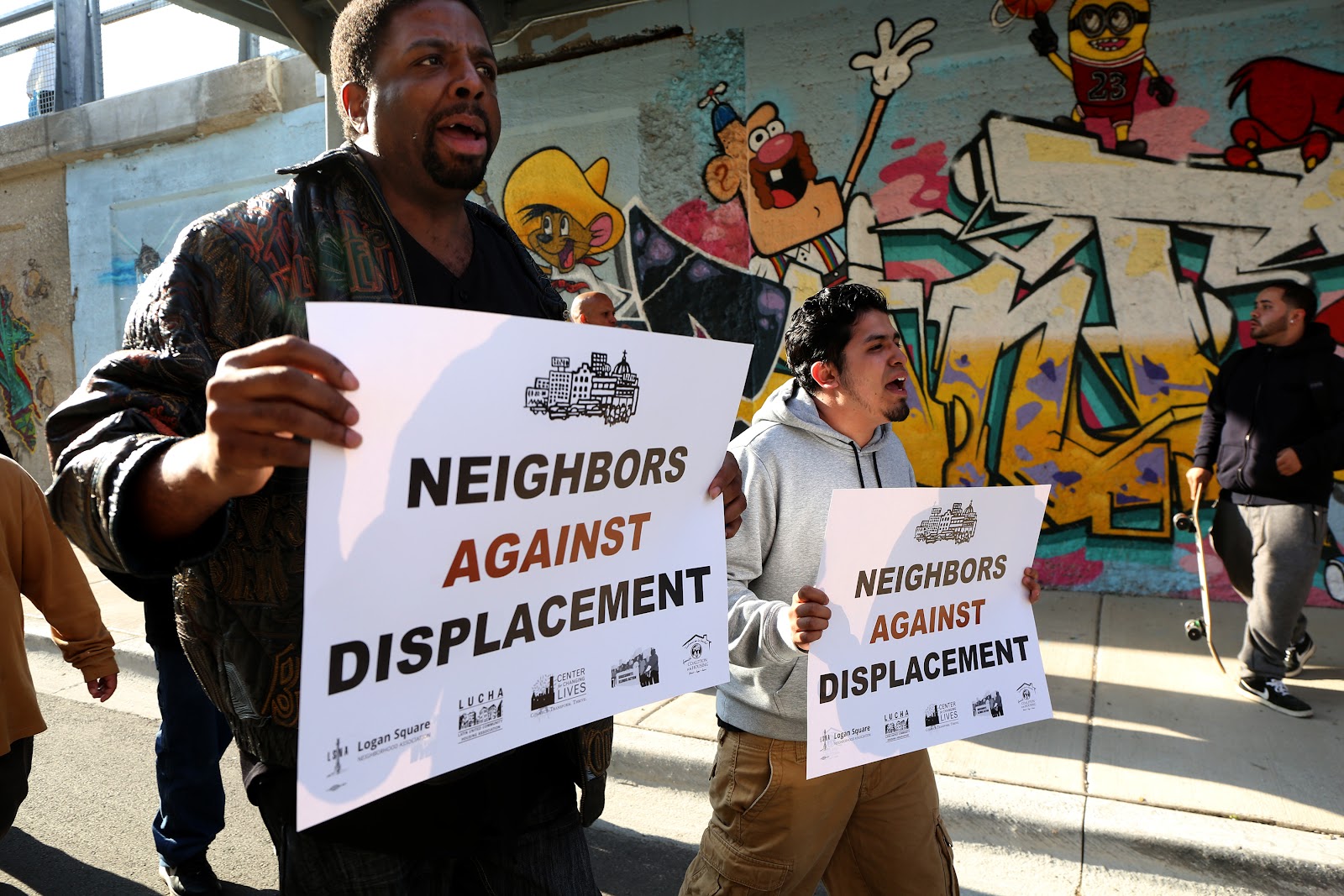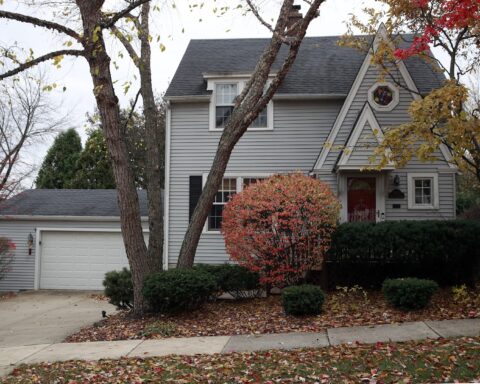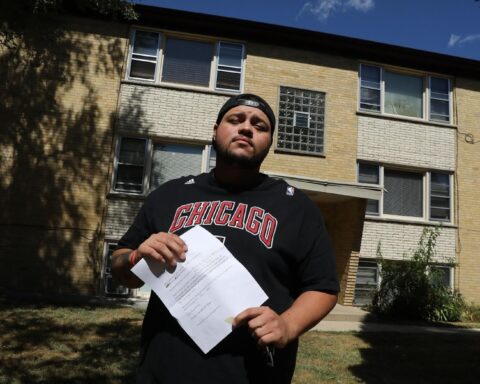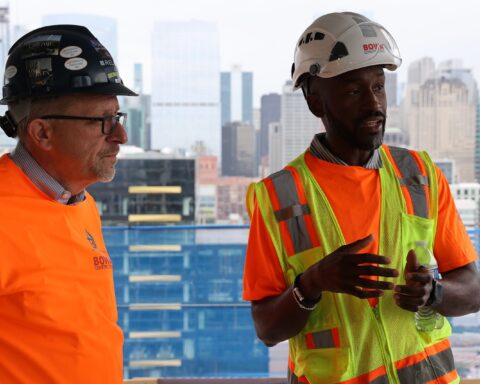Homeownership can come with a hefty supply of emotions, paperwork and financial planning. And as one grows more attached to a residence over the years, feelings often deepen as house becomes home and memories start to accumulate.
So when terms like gentrification, poverty and low-income housing are bandied about in your neighborhood, you may be somewhat wary. But not so fast. Common misperceptions surround these topics. Myths abound. Here are three such falsehoods — and the truths behind them — according to experts.
Myth 1: Gentrification has as much to do with morals as with economics.
What’s the definition of gentrification?
Depends whom you ask.
According to Jason Patch, co-author of the book “Gentrifier” and an associate professor at Roger Williams University, it is the reinvestment into a devalued neighborhood to create a new residential and commercial infrastructure for middle- and high-income residents.
But on a recent Saturday afternoon in the Loop, several passers-by had different definitions. When prompted to define the term, people offered a variety of responses — and even more opinions flowed when individuals were asked if they considered themselves gentrifiers. All responses carried mixed connotations — some expressed indifference, while others expressed frustration coupled with ambiguity.
“The assignment of the term ‘gentrifier’ becomes sticky only when we assign moral weight to the term. And many do so,” John Joe Schlichtman, an associate professor in the sociology department at DePaul University, writes in his book “Gentrifier.” Schlichtman is a co-author of the book, alongside Jason Patch and Marc Lamont Hill. “Our interpretation of others’ gentrification is inevitably and inextricably tied in some way to our understanding of our own housing choices.”
According to Schlichtman, gentrification need not depend on the misplaced motives of housing consumers. To be a gentrifier is to be a middle-class housing consumer investing in a disinvested area in a period during which a critical mass of others are doing the same. This investment exerts pressure on the neighborhood — in the form of rising rents, or perhaps a shift in the nature of local policing, a change in the rhythms of the neighborhood, and so on.
“Yes, there could be gentrifiers with bad motives out there, but you don’t have to have bad motives to be a gentrifier,” Schlichtman said in an interview. “We need to take the depth of ethical and moral disgust out of the name gentrifier so that we can get people together and say this is something that we are a part of, but it’s also something that is bigger than us. … So how do we move forward?”
The ripe environment for gentrification today, Schlichtman said, was created by a history of “de-” words: demarcation, devaluation, deterioration, demolition, defunding and destabilization, among others. (Demarcation refers to the discriminatory practice of redlining, when banks refused to offer home loans in certain communities based on residents’ race or ethnicity.)
“All those ‘de-s’ cut the path of injustice that gentrification fills, so no matter how good your heart is, if you enter into that context … you are a gentrifier,” he said. “You are a part of that critical mass that is exerting economic, perhaps social, perhaps cultural pressure on that neighborhood.”
Moving away from moral arguments, he said — and instead understanding “the various strands of ‘de-s’ in a particular context that makes a home so cheap” — is an important step on the path to just housing policies.
Myth 2: There is more poverty in cities than in suburbs.
The Census Bureau released new poverty statistics for the nation last month that revealed that high poverty rates aren’t just associated with metropolitan areas. According to Scott Allard, a professor at the Evans School of Public Policy and Governance at the University of Washington, poverty’s geography has increasingly moved to the suburbs — as evidenced in his book “Places in Need: The Changing Geography of Poverty.”
“The number of poor persons in suburban Chicago eclipsed the number in the City of Chicago in the last decade, and there are no signs of this trend reversing anytime soon,” Allard wrote. “Seven of every ten suburban municipalities outside Chicago saw the number of poor residents at least double from 1990 to 2014. More than 40 percent of Chicago suburbs saw their poverty population more than triple during that time. By 2014 there were nearly 17 million poor people living in the suburbs of the 100 largest metropolitan areas, compared to just under 13 million in the cities.”
Allard’s data show that suburbs have seen increases in single-parent households, decreases in the number of college graduates and higher unemployment rates. As a result, suburban demand for assistance programs has increased but social service providers lack the resources to meet the need.
How did we miss the shift in the suburbs?
“I think we’re not aware of these trends in part because suburbs were created to be exclusive places … and therefore no suburb really wants to think they have a poverty problem, partly because it may require them to do something about it — but it also may affect their ability to maintain property values or to attract new homeowners,” Allard said.
What’s interesting, he noted, is that “poverty is as segregated in suburbs as it is in cities.”
How can poverty become a thing of the past both in metropolises and outside their boundaries? Strengthen safety nets, Allard said, such as food assistance and the earned income tax credit, which aids low- to moderate-income working citizens. These supports help people provide for their families with the hope that as they work, they’ll be able to advance in the labor market.
“There are things we know that can make a difference, we just need to scale them and expand them,” he said. “It’s a long game, but I think there’s a lot that can be accomplished in the near term to not only combat or fight the pernicious stereotypes on poverty and race and place but also come up with solutions that bring people together.”
Myth 3: Having low-income housing in your community reduces property values.
Just as the context of gentrification keeps changing and the boundaries of poverty keep shifting, so does our understanding of low-income housing’s impact on its neighbors. Anthony DeFusco, assistant professor of finance at Northwestern University’s Kellogg School of Management, said the effects of new, affordable housing developments on local home prices is nuanced.
A 2016 Stanford Graduate School of Business analysis reviewed low-income housing developments nationwide that were funded through the low-income housing tax credit program. The impact of that housing on surrounding property values varied based on neighborhoods’ economic state and number of minority residents.
“What the study finds is that the effects of putting one of these in a neighborhood depends on the pre-existing conditions in that neighborhood,” DeFusco said.
So, he said, if low-incoming housing was placed in a low-income neighborhood, it would actually raise home prices in that neighborhood by about 6.5 percent over a 10-year period — a sort of neighborhood revitalization effect, which is what the tax credit program is intended to do.
However, if you put a low-income housing development in an already high-income neighborhood, the effect on prices heavily depends on whether the neighborhood has a large or small minority population. In a high-income neighborhood with a small minority population — sort of a poster child for NIMBYism, a “not in my backyard” attitude, DeFusco said — you do see declines in prices, not enormous declines, but about a 2.5 percent drop over a 10-year period.
“You don’t see changes in crime rates or things like that, but you do see changes in the composition of who lives there,” he said. “Building (low-income housing) in high-income neighborhoods with high-minority shares does not seem to have much of an effect.”
A better approach to affordable housing, he said, lies in production.
“Instead of building housing and targeting it” to people with income below a certain level, “if you just built more housing, and housing was more plentiful overall, prices in general would be lower and would be more affordable for everybody.”







